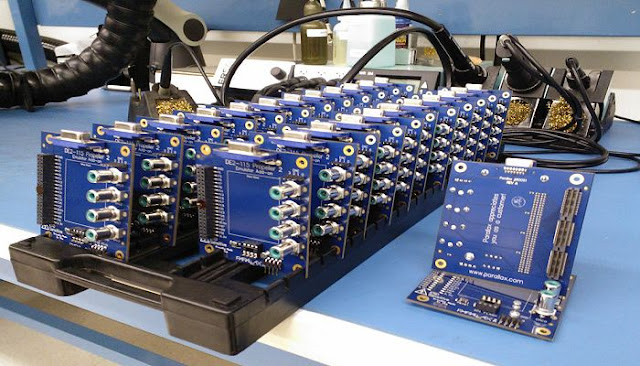Flash-based Arrays: Empowering Your Business with High-Speed Data Access
Flash-based arrays (FBA) are a
type of data storage system that uses flash memory technology to store and
retrieve data. Unlike traditional hard disk drives (HDDs), which rely on
spinning disks to read and write data, FBAs use solid-state storage media, such
as NAND flash, to achieve higher performance, lower power consumption, and
improved reliability.
FBAs are particularly well-suited
to handle the requirements of modern data centers, where the demand for
high-speed, low-latency access to data is constantly increasing. In this
article, we will explore the key features and benefits of flash-based arrays and
discuss how they differ from other types of storage solutions. According to Coherent Market Insights the global
flash-based array market was valued for US$ 27,888.8 Mn in 2019.
Key Features of Flash-Based
Arrays
High Performance: Flash-Based Arrays can provide
significantly faster read and write speeds compared to traditional HDDs. This
is because flash memory is capable of delivering high-speed random access to
data, which means that data can be retrieved quickly and efficiently. FBAs
typically achieve read and write speeds of several hundred thousand
input/output operations per second (IOPS), making them an excellent choice for
use cases that require fast data access, such as high-performance computing,
real-time analytics, and online transaction processing (OLTP).
Low Latency: One of the most
significant advantages of Flash-Based
Arrays is their low latency. Latency refers to the amount of time it
takes for a storage system to respond to a request for data. FBAs have much
lower latency than HDDs because they do not have to physically seek out data on
a spinning disk. Instead, data can be accessed directly from the flash memory,
resulting in much faster response times.
Scalability: FBAs can be easily
scaled to meet the storage needs of any organization. They can be configured in
a variety of ways, including all-flash arrays (AFAs), hybrid arrays, and
converged infrastructure solutions. This flexibility allows organizations to
tailor their storage infrastructure to meet their specific requirements,
whether they need high-performance, low-latency storage for mission-critical
applications or cost-effective storage for less demanding workloads.
Data Protection: FBAs offer
advanced data protection features that can help ensure the integrity and
availability of stored data. These features include RAID (redundant array of
independent disks) protection, data encryption, and backup and recovery capabilities.
FBAs can also be configured to replicate data across multiple locations,
providing additional protection against data loss or downtime.
Energy Efficiency: FBAs are more
energy-efficient than traditional HDDs because they consume less power and generate
less heat. This can translate into significant cost savings over time, as
organizations can reduce their energy consumption and cooling requirements.




Comments
Post a Comment